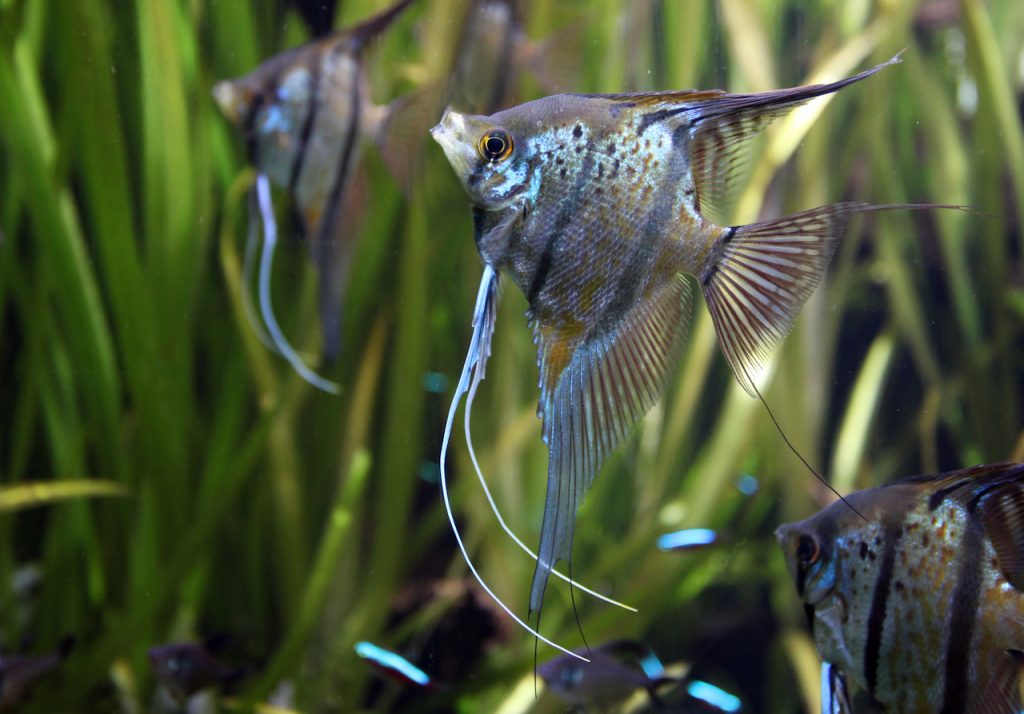
The freshwater angelfish is a beautiful tropical fish that can be a nice addition to your aquarium. They’re graceful, easy to care for and plentiful, which make them a popular choice for the beginning hobbyist.
The freshwater angelfish Pterophyllum scalare is a species of cichlid and in the wild can be found in the waters of South America. What makes these freshwater tropical fish special are the variety of colors and patterns they exhibit. The most common you’ll find is the black and silver striped variety, but there are many more to choose from, which we’ll talk about later.
Table of Contents
Tank Considerations
These fish can grow to large sizes — up to six inches — so you’re going to want to put them in a tank that’s larger than 20 gallons. You should also note that freshwater angelfish grow bigger vertically than they do horizontally, and you may want to consider putting them in a tank that matches those proportions. Angelfish will do fine alone, but they prefer to be with a few of their own kind, so consider a group of three or more to make them happy. Because these fish can grow to fairly large sizes, be aware of overcrowding, which can lead to territorial aggression, especially if you’re keeping a group of these in your community tank.
For decorations, your freshwater angelfish will be happy in a tank that’s dense with vegetation.
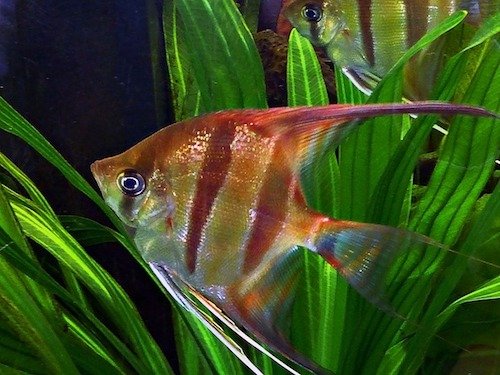
Freshwater Angelfish Care and Health
In the wild, these fish live in slightly acidic pH that ranges between 6.0 – 7.5, with a water temperature that ranges from 75˚ – 84˚ Fahrenheit. In addition, they prefer water on the soft side.
It’s important to note, however, that while these fish are generally peaceful, and get along well with in a community tank, they can exhibit aggression during feeding and when breeding. It’s not uncommon for angelfish to prey on much smaller fish, so keep that in mind when planning for their tank mates. On the other side, be wary of putting them into tanks with other aggressive species that will nip the angelfish’s fins.
Diet
By nature, angelfish are omnivores, but will accept almost any type of high quality flake food, frozen food like brine shrimp and live food as well. You should also supplement their diet with some vegetable like algae wafers or fresh vegetables to give them some variety.
One aspect about these fish that makes them popular with hobbyists is that they can learn when it’s time to be fed. When they see you approach, they will swim to the top of the tank and wait for their food. As mentioned, they can be aggressive and competitive during feeding time, so you’re going to have to make sure their tank mates are also getting the food they need.
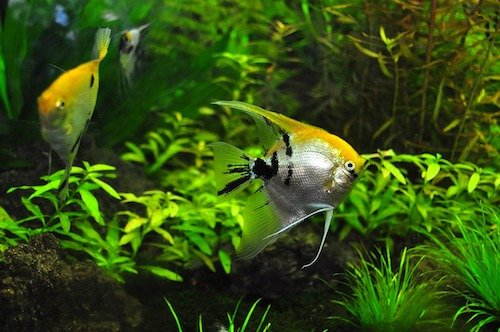
Breeding
Angelfish are easy to breed, but it can be difficult to determine the sexes of these fish. In fact, even experts admit to getting fooled when trying to determine sex.
When these fish are young, it’s nearly impossible to determine their sex, so your’e going to want to wait until they’re sexually mature if you want to try to get a breeding pair.
It’s only when these fish are spawning that you’ll be 100 percent sure of the sex because only then do the physical differences become obvious. The female angelfish will show a tear drop shaped breeding tube while the male exhibits a cone shaped breeding tube.
For breeding, it’s important that you feed your breeding pair a healthy diet and it’s a good idea to keep the breeding pair in their own separate tank where conditions can be more controlled. Keep the water temperature between 80˚ – 85˚ Fahrenheit and keep the water quality high by performing regular water changes.
When angelfish spawn, the female lays eggs in rows, and the male comes up behind and fertilizes the eggs.
Once this is finished, you should remove the adults because it’s likely that they’ll eat the eggs and/or the fry.
Freshwater Angelfish Types
As mentioned, there is mainly one species of freshwater angelfish, but there are a variety of types, all of which will add beauty to your tank.
Koi Angelfish

This fish is sometimes called a Golden Splash angelfish because of the splashes of orange over the body that resembles a koi.
Altum Angelfish
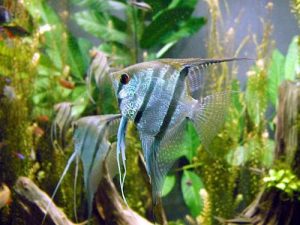
This angelfish is known as Pterophyllum altum as opposed to Pterophyllum scalare, which is the more common angelfish you’ll find. It isn’t quite as popular in the hobby as the latter mainly because they’re more sensitive to changing water conditions and need more care. Because of this, they’re not recommended for the beginning hobbyist.
Golden Angelfish
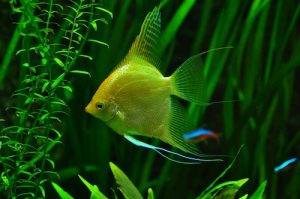
As the name describes, these angelfish are gold in color and originated from a breeding pair that produced fry that were gold in color. Since then, these fish have become a staple in the freshwater aquarium hobby and should be easy to find at your local pet store.
Zebra Angelfish
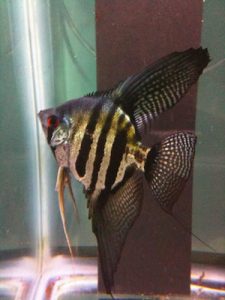
The coloring on these angelfish is subtle yet beautiful. They’re called zebra because of the four faint stripes, which is different than other angels that exhibit only three stripes.
Blushing Angelfish

This angelfish is devoid of stripes and its body is a shimmery silver. What gives this fish its name is the patch of red under the eye, which make it look as if it’s blushing.
Half Black Angelfish
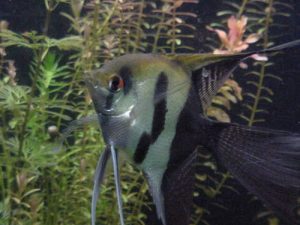
As the name implies, this fish is half black and half silver. It’s said it’s difficult to breed and raise this variety, which is why they’re not easily found in pet stores.
Summary
- Angelfish size: Up to six inches
- Schooling: Prefers to be in a group (3 or more) of their own kind
- Tank size: 20 gallon minimum (for 1) but larger is preferable. Also preferable to have a tank that’s taller rather than wider.
- Diet: Omnivore
- Water temperature: 74˚-84˚ Fahrenheit
- Water pH: 5-13
- Water hardness: soft
- Breeding: Easy
When fully grown, the angelfish is an elegant and graceful fish. It’s relaxing to watch it glide through the water with its long, trailing fins. With proper care, freshwater angelfish can live up to ten years. Their ease of care and the fact that they do relatively well in a community tank make them an ideal choice for the novice hobbyist and to those who want to experiment with breeding.

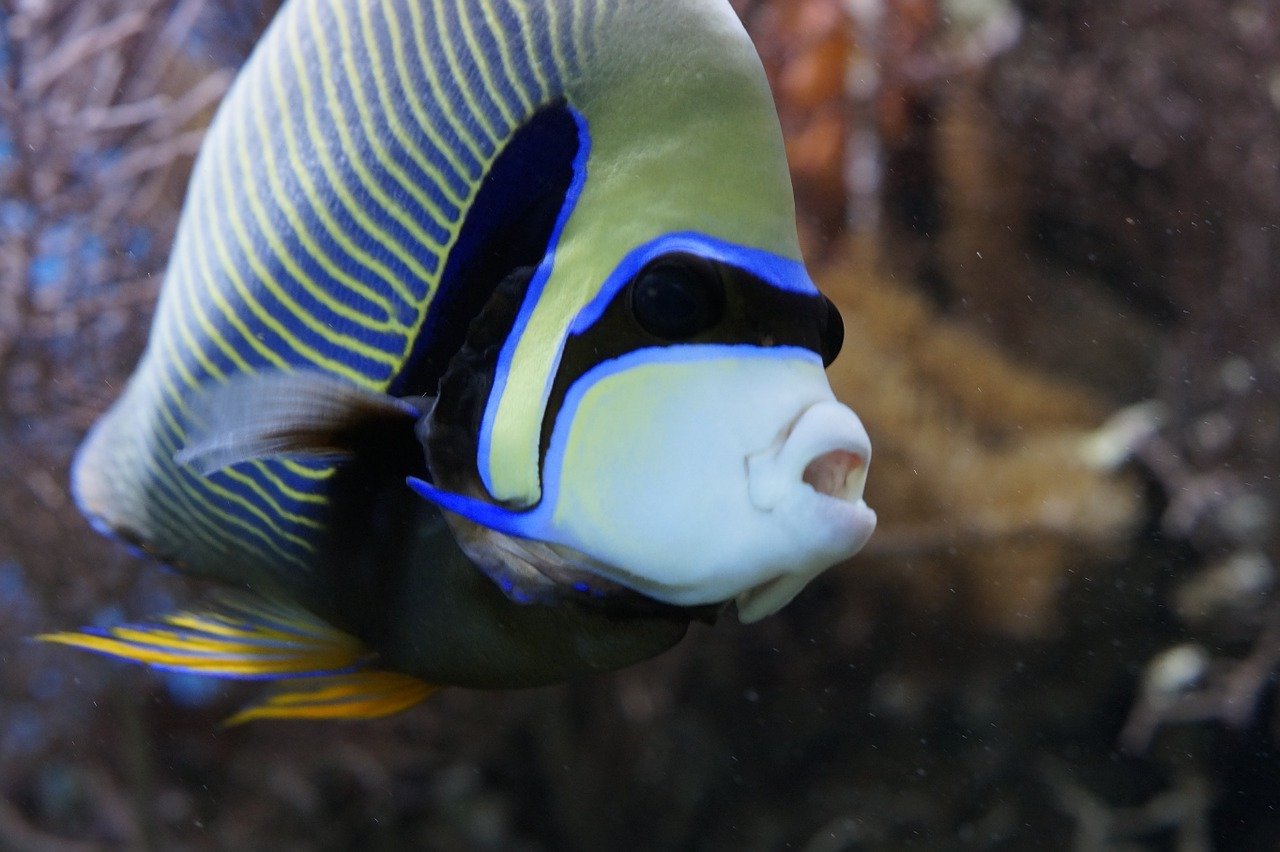
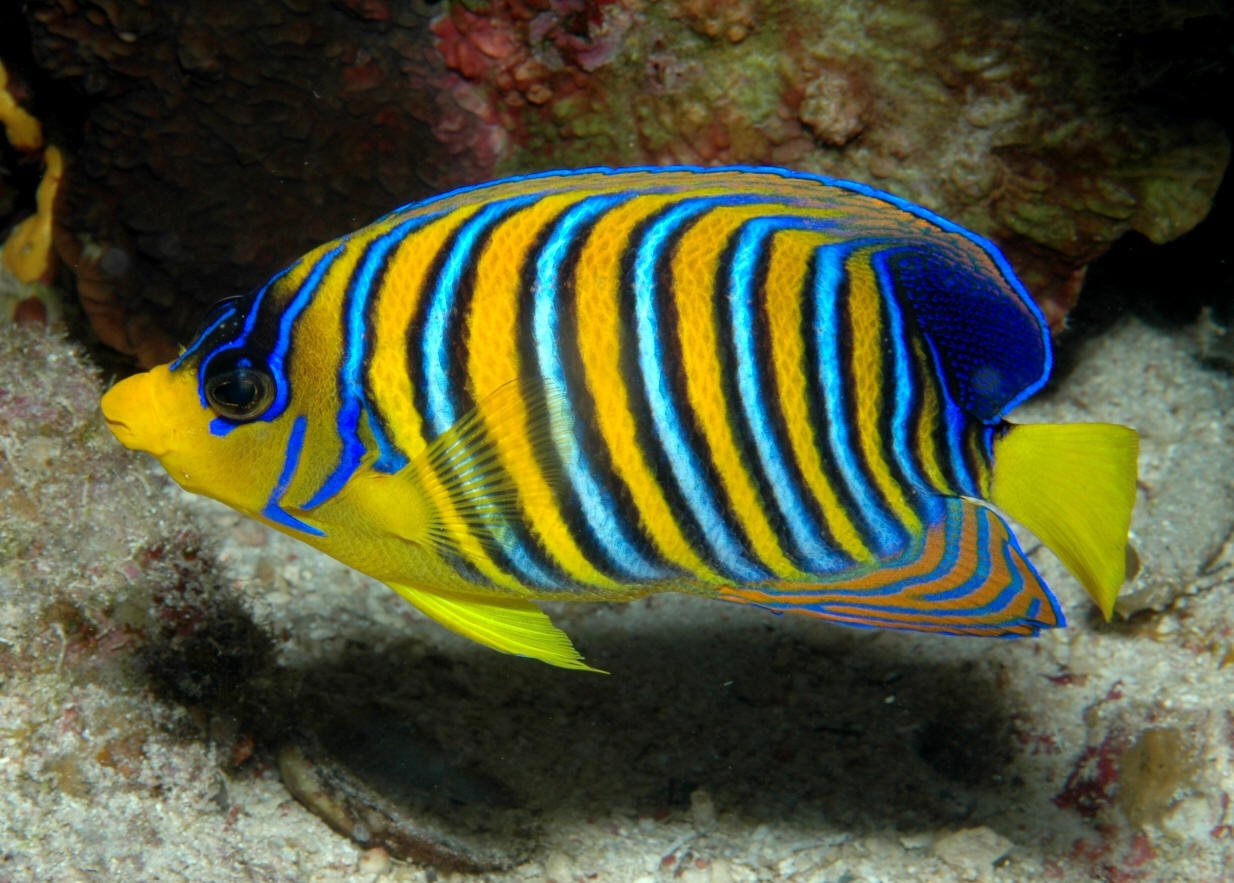
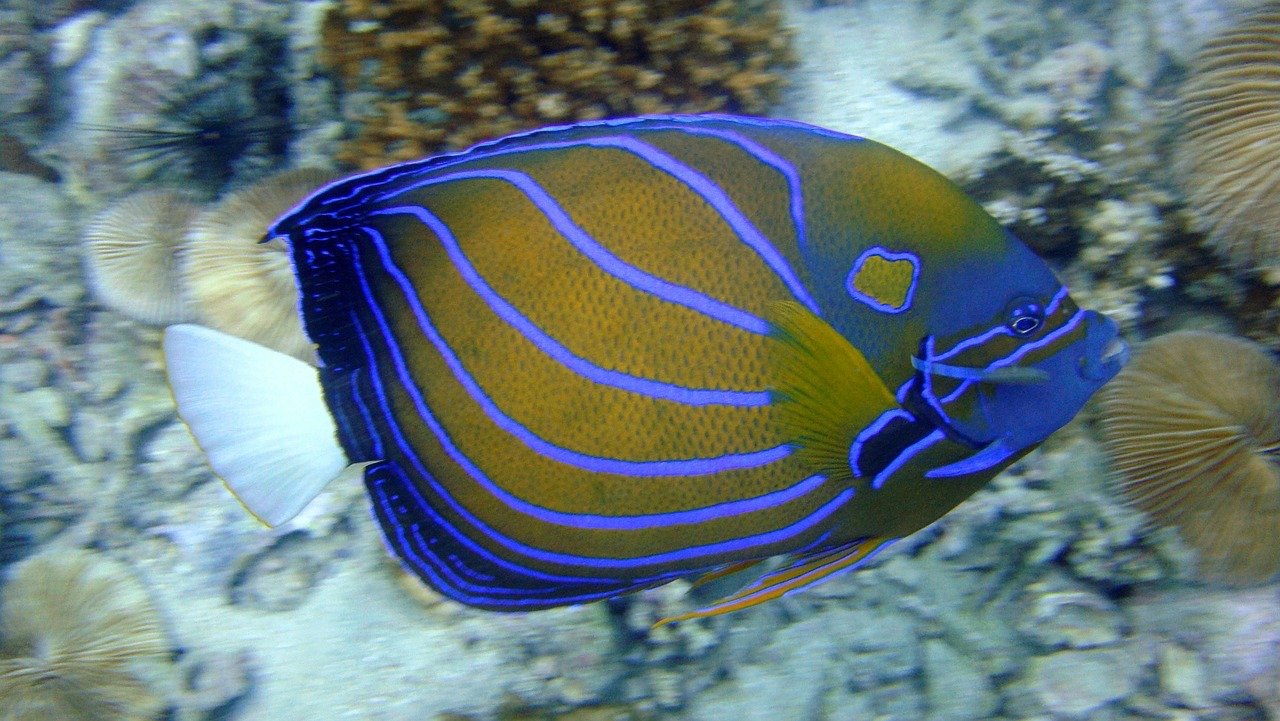
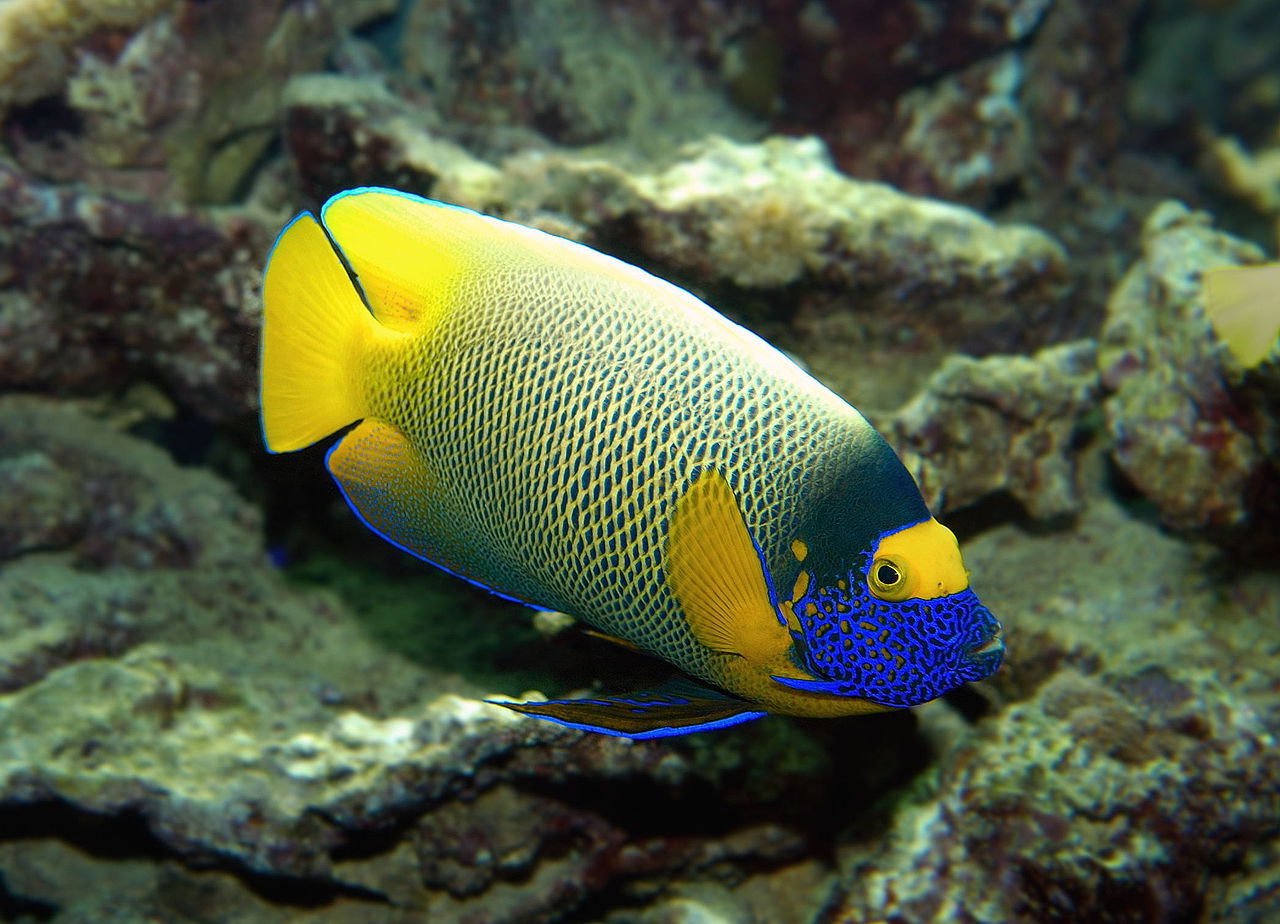
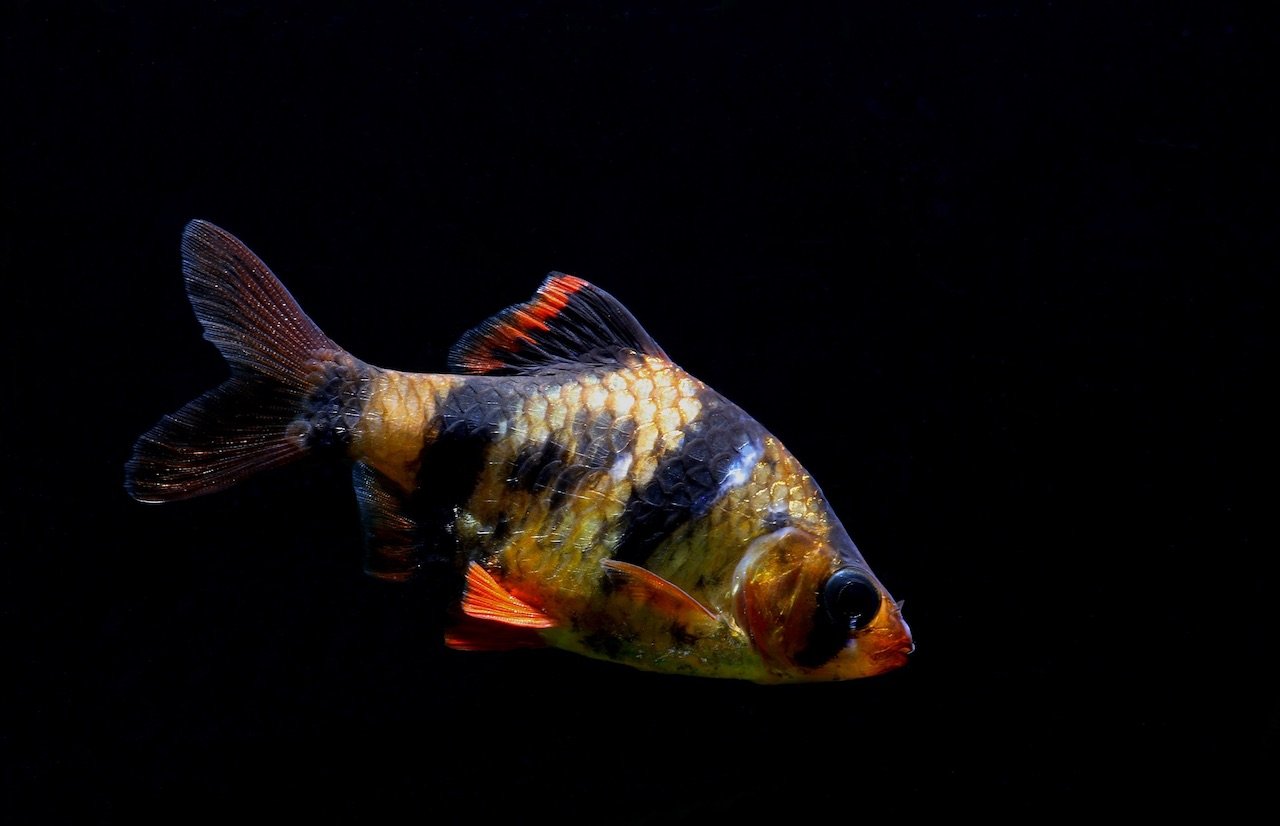
John smith says
The first picture on your angelfish page is a heniochus butterfly, which is a marine fish. not sure why it’s on that page, could be misleading. Just my .02
Sean Winkler says
Thanks for that! It has been fixed now.